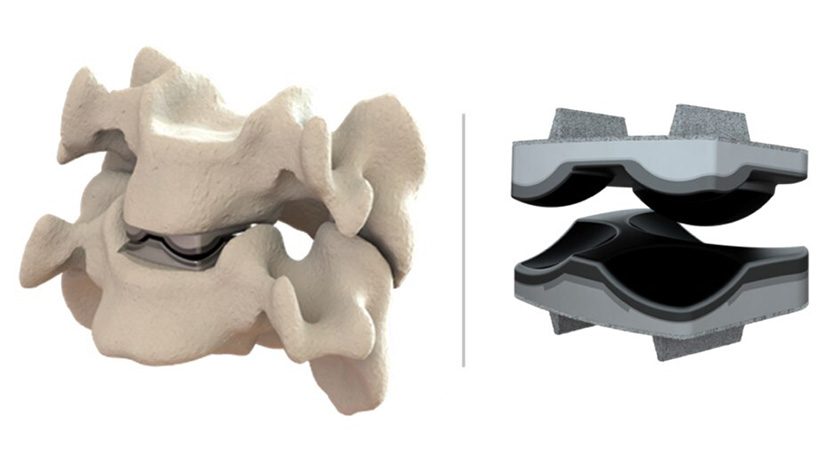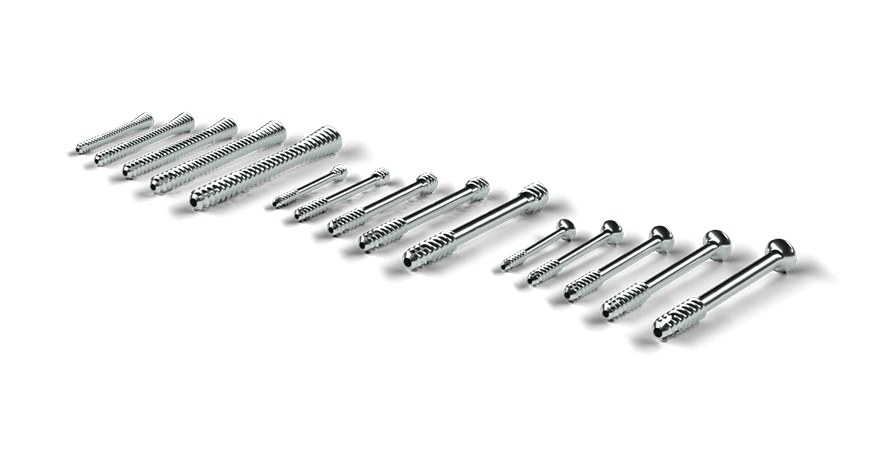

 Copy to clipboard
Copy to clipboard 
Citieffe is a long-established company in fracture care whose beginnings date back to the 1960s and a collaboration with the renowned Rizzoli Orthopaedic Institute in Bologna, Italy. While an established player in the European trauma and extremities market, the company has a significant strategic focus on growing its presence in international markets. Its expansion into the U.S. and Latin America has allowed the company to grow meaningful revenue in recent years.
“Even in markets that are not growing fast, we are growing and winning market share,” said Mauro Rombolà, Citieffe’s USA General Manager. “We have seen significant success.”
ORTHOWORLD estimates that the U.S. accounts for 67% of the $62 billion in global orthopedic sales. EMEA and APAC regions account for 18% and 11% of the sales, respectively, and all other markets round out the remaining 3% of sales. More recently, smaller European and Asian companies have shown interest in the U.S. and markets outside of their headquarter region.
Citieffe is a prime example of small OUS companies expanding their operations to take advantage of the largest orthopedic market, the U.S., and opportunities in fragmented and untapped regions, like South America. The company has established offices in Italy, Mexico and the U.S. and has found that to be competitive, quality relationships are as meaningful as quality products.
We met with Mr. Rombolà and Rodrigo Fernández, Latin America General Manager, at AAOS in March. Citieffe was showcasing newer implants for tibia and femur fracture care, but primarily highlighting the company to attract new distributors across the Americas.
“We have new solutions that we expect will gain good acceptance by doctors,” Mr. Fernandez said. “At the end of the day, though, we’re here to build strength with our business partners.”
What trends are you seeing in the trauma market? What are you hearing from trauma surgeons?
Mr. Rombolà: Outside of traditional solutions, our users are interested in absorbable materials, tailored solutions and computer-assisted technologies. The traditional market is beginning to meet these areas, but they’re still on the fringe of what’s possible in the future. Anytime you develop a new solution, there’s a need to understand what makes your product different. What issue are you trying to solve, and how are you solving it? Those questions push R&D efforts. Adoption of computer-assisted technologies and tailored solutions are gaining attention but require sensitive collaboration with doctors.
Mr. Fernández: When you talk to surgeons, though, they prioritize service and ask us to work closely with them. I’ve seen a lot of companies focus on new technology and lose connection with the end user.
One of the main aspects that differentiates us in the market is that we’re very close to the doctors. They know that they can call us, and we will analyze the case together and give them our input. Of course, the doctor owns the procedure, but they listen to us because we have developed relationships with them over many years. Those relationships are very important to maintain if you want to be successful in this business.
Those relationships also lead to innovation. When a doctor begins to trust you, they tell you when they lack a product, and you can continue to build the business based on their voices. A lot of companies have quality products, but not quality relationships.
How is Citieffe thinking about future products?
Mr. Rombolà: Our R&D team is always looking at everything that is on the market or coming to market in the near future. We run parallel efforts; one is the research and development for products that are in the pipeline that will come out very soon, and the other is the advanced research looking out five to 10 years. You cannot only be a follower and wait to see what the next innovation is in the market.
Mr. Fernández: I agree with Mauro. In addition, I believe that an innovation is not an innovation until somebody buys it. We work closely with doctors because they give us feedback on how to operate with our products and what new products we should add to the portfolio. The relationship with doctors is the foundation for our innovation and our business.
MDR has been disruptive for companies and there’s significant complexity to serving international markets. What differences do you see in the regions you serve?
Mr. Rombolà: MDR in Europe is a significant change. With any big change, the first moment is shock, the second is adaptation and the third is return to a standard level where everyone knows how to behave and move forward. MDR has been an evolution. We were one of the first companies to receive MDR certification, and it was a competitive advantage for us. A company that is MDR certified can keep business as usual and focus on growth opportunities when the market presents them.
Overall, the market is very different depending on the geography. When you look at the USA vs. Latin America vs. Europe, the pace of the markets is often different. Sometimes, we’ll see moments of tremendous acceleration and stabilization, and we as a company have to meet that pace.
The USA is the biggest orthopedic market and sets the expectation for pace. If you want to be a successful company, you need to be able to meet the standards in the USA. I’m not talking about quality; I’m talking about service. Those expectations are beneficial for the whole company. We may address problems in the various geographies differently, but at the end of the day, inputs from every region help us develop solutions for the global market.
Mr. Fernández: We don’t think the market is growing much in Latin America. We’re seeing a lot of competitors from Asia coming to the region, and the regulatory agencies are taking more time to register new technologies. There are also healthcare budget constraints, and hospitals can’t afford to buy new innovative technologies.
Even though the market is not growing a lot, we have been successful in gaining market share. I think it’s a result of how closely we work with the doctors and bring the products and the services that they need. In every country in Latin America, the situation is totally different in terms of markets, regulations and expectations. And we need to understand the dynamics of each market to be successful.
Citieffe is a long-established company in fracture care whose beginnings date back to the 1960s and a collaboration with the renowned Rizzoli Orthopaedic Institute in Bologna, Italy. While an established player in the European trauma and extremities market, the company has a significant strategic focus on growing its presence in...
Citieffe is a long-established company in fracture care whose beginnings date back to the 1960s and a collaboration with the renowned Rizzoli Orthopaedic Institute in Bologna, Italy. While an established player in the European trauma and extremities market, the company has a significant strategic focus on growing its presence in international markets. Its expansion into the U.S. and Latin America has allowed the company to grow meaningful revenue in recent years.
“Even in markets that are not growing fast, we are growing and winning market share,” said Mauro Rombolà, Citieffe’s USA General Manager. “We have seen significant success.”
ORTHOWORLD estimates that the U.S. accounts for 67% of the $62 billion in global orthopedic sales. EMEA and APAC regions account for 18% and 11% of the sales, respectively, and all other markets round out the remaining 3% of sales. More recently, smaller European and Asian companies have shown interest in the U.S. and markets outside of their headquarter region.
Citieffe is a prime example of small OUS companies expanding their operations to take advantage of the largest orthopedic market, the U.S., and opportunities in fragmented and untapped regions, like South America. The company has established offices in Italy, Mexico and the U.S. and has found that to be competitive, quality relationships are as meaningful as quality products.
We met with Mr. Rombolà and Rodrigo Fernández, Latin America General Manager, at AAOS in March. Citieffe was showcasing newer implants for tibia and femur fracture care, but primarily highlighting the company to attract new distributors across the Americas.
“We have new solutions that we expect will gain good acceptance by doctors,” Mr. Fernandez said. “At the end of the day, though, we’re here to build strength with our business partners.”
What trends are you seeing in the trauma market? What are you hearing from trauma surgeons?
Mr. Rombolà: Outside of traditional solutions, our users are interested in absorbable materials, tailored solutions and computer-assisted technologies. The traditional market is beginning to meet these areas, but they’re still on the fringe of what’s possible in the future. Anytime you develop a new solution, there’s a need to understand what makes your product different. What issue are you trying to solve, and how are you solving it? Those questions push R&D efforts. Adoption of computer-assisted technologies and tailored solutions are gaining attention but require sensitive collaboration with doctors.
Mr. Fernández: When you talk to surgeons, though, they prioritize service and ask us to work closely with them. I’ve seen a lot of companies focus on new technology and lose connection with the end user.
One of the main aspects that differentiates us in the market is that we’re very close to the doctors. They know that they can call us, and we will analyze the case together and give them our input. Of course, the doctor owns the procedure, but they listen to us because we have developed relationships with them over many years. Those relationships are very important to maintain if you want to be successful in this business.
Those relationships also lead to innovation. When a doctor begins to trust you, they tell you when they lack a product, and you can continue to build the business based on their voices. A lot of companies have quality products, but not quality relationships.
How is Citieffe thinking about future products?
Mr. Rombolà: Our R&D team is always looking at everything that is on the market or coming to market in the near future. We run parallel efforts; one is the research and development for products that are in the pipeline that will come out very soon, and the other is the advanced research looking out five to 10 years. You cannot only be a follower and wait to see what the next innovation is in the market.
Mr. Fernández: I agree with Mauro. In addition, I believe that an innovation is not an innovation until somebody buys it. We work closely with doctors because they give us feedback on how to operate with our products and what new products we should add to the portfolio. The relationship with doctors is the foundation for our innovation and our business.
MDR has been disruptive for companies and there’s significant complexity to serving international markets. What differences do you see in the regions you serve?
Mr. Rombolà: MDR in Europe is a significant change. With any big change, the first moment is shock, the second is adaptation and the third is return to a standard level where everyone knows how to behave and move forward. MDR has been an evolution. We were one of the first companies to receive MDR certification, and it was a competitive advantage for us. A company that is MDR certified can keep business as usual and focus on growth opportunities when the market presents them.
Overall, the market is very different depending on the geography. When you look at the USA vs. Latin America vs. Europe, the pace of the markets is often different. Sometimes, we’ll see moments of tremendous acceleration and stabilization, and we as a company have to meet that pace.
The USA is the biggest orthopedic market and sets the expectation for pace. If you want to be a successful company, you need to be able to meet the standards in the USA. I’m not talking about quality; I’m talking about service. Those expectations are beneficial for the whole company. We may address problems in the various geographies differently, but at the end of the day, inputs from every region help us develop solutions for the global market.
Mr. Fernández: We don’t think the market is growing much in Latin America. We’re seeing a lot of competitors from Asia coming to the region, and the regulatory agencies are taking more time to register new technologies. There are also healthcare budget constraints, and hospitals can’t afford to buy new innovative technologies.
Even though the market is not growing a lot, we have been successful in gaining market share. I think it’s a result of how closely we work with the doctors and bring the products and the services that they need. In every country in Latin America, the situation is totally different in terms of markets, regulations and expectations. And we need to understand the dynamics of each market to be successful.

You are out of free articles for this month
Subscribe as a Guest for $0 and unlock a total of 5 articles per month.
You are out of five articles for this month
Subscribe as an Executive Member for access to unlimited articles, THE ORTHOPAEDIC INDUSTRY ANNUAL REPORT and more.
CL
Carolyn LaWell is ORTHOWORLD's Chief Content Officer. She joined ORTHOWORLD in 2012 to oversee its editorial and industry education. She previously served in editor roles at B2B magazines and newspapers.






